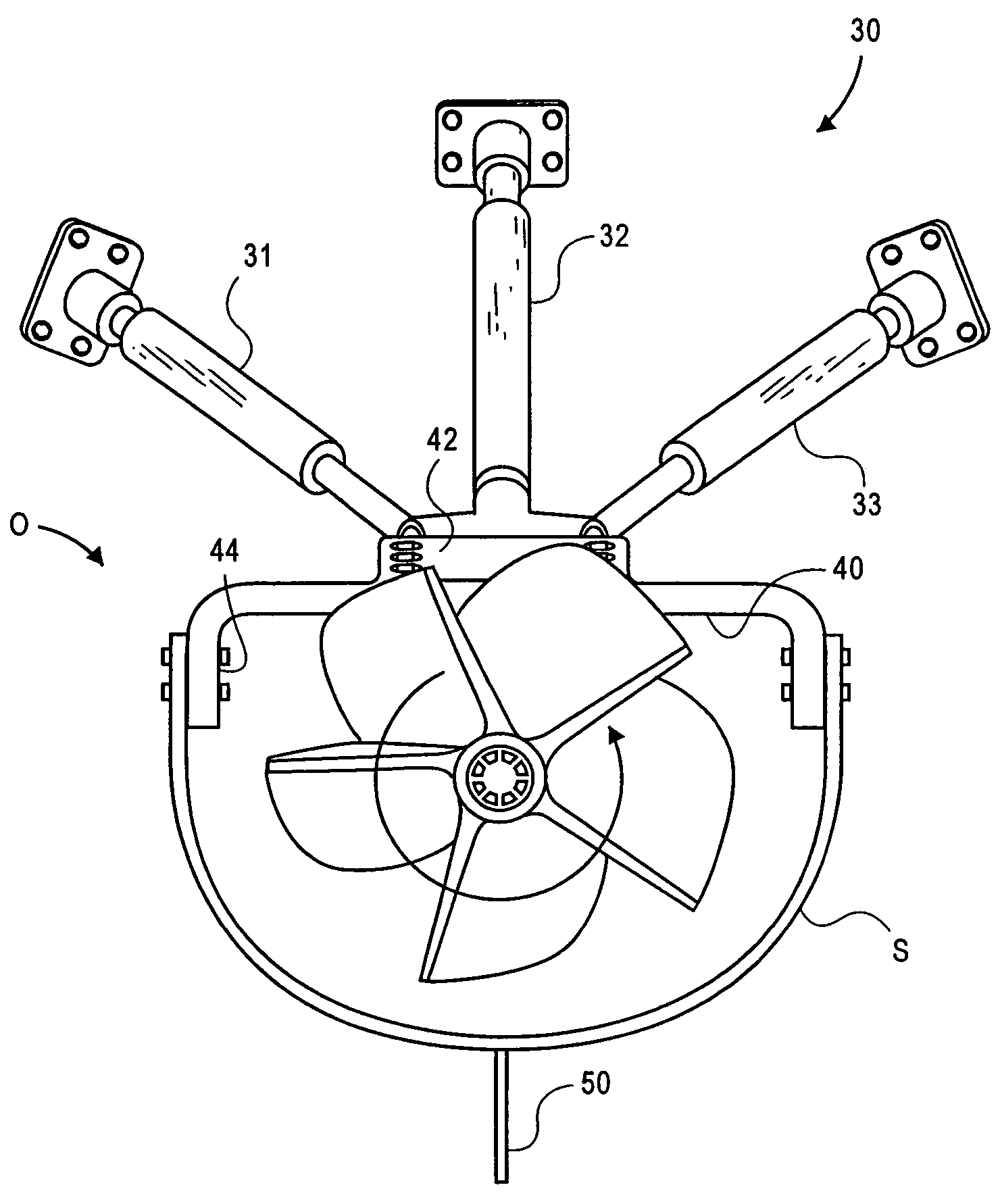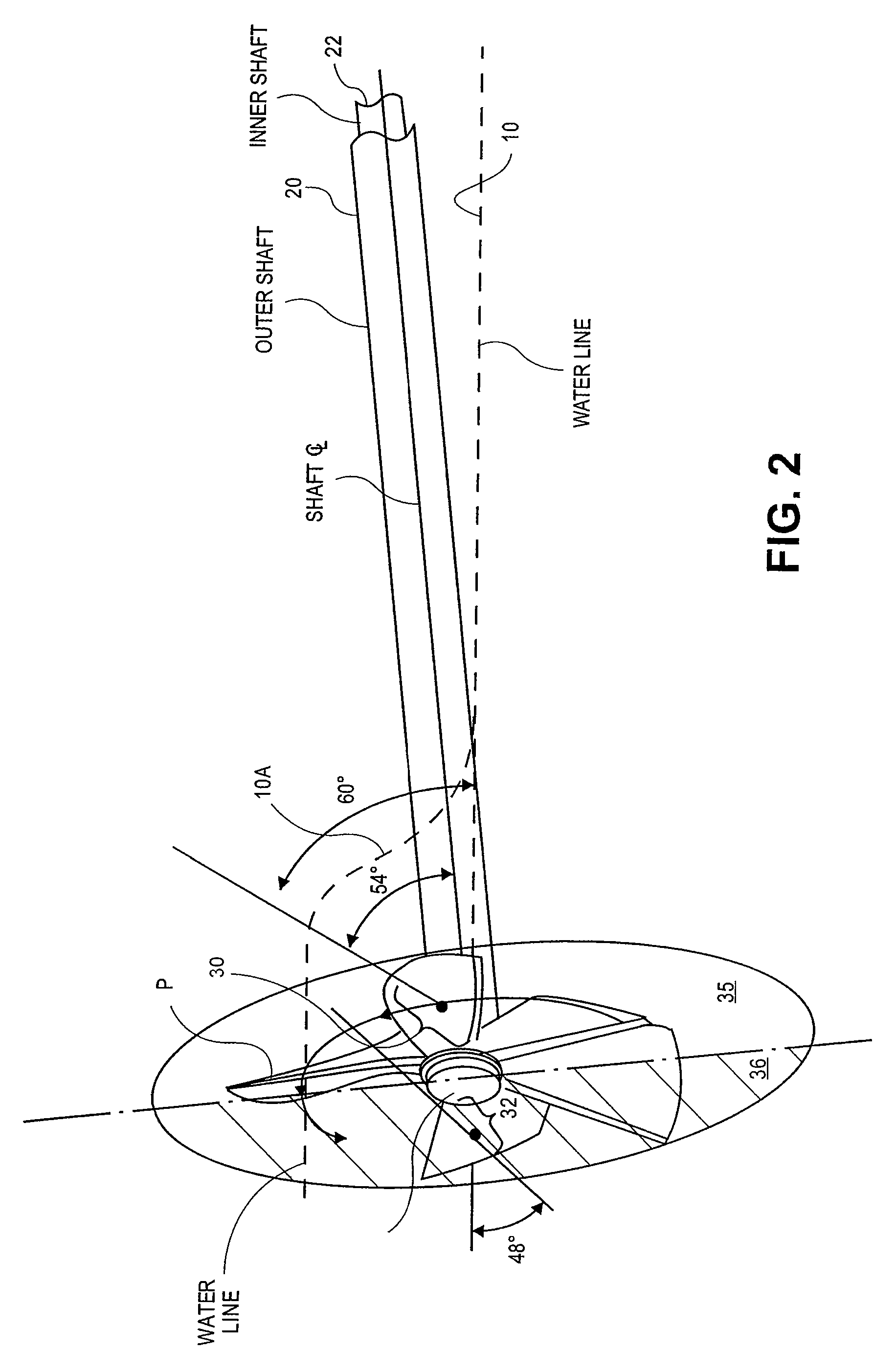Shroud enclosed inverted surface piercing propeller outdrive
a propeller and inverter technology, applied in waterborne vessels, marine propulsion, vessel construction, etc., can solve problems such as not allowing the driven hull to be driven
- Summary
- Abstract
- Description
- Claims
- Application Information
AI Technical Summary
Benefits of technology
Problems solved by technology
Method used
Image
Examples
Embodiment Construction
[0059]Referring to FIG. 1, high speed planing hull H having transom T has outdrive O. Hull H passes over water having upper surface 10. Outdrive O has partially immersed propeller P surrounded by shroud S which below, around and adjacent the propeller.
[0060]Referring further to FIG. 1, the most important thing to note is the angle between the plane of upper surface 10 of the water and centerline 14 of outdrive O shaft. Specifically, outdrive O has an angle of 6° with respect to upper surface 10. This angle can vary. In a wide range, this angle can be from 3° to 12°. In a narrower range, this angle can be from 4° to 9°. Here it is illustrated at the preferred angle of about 6°. Further, it will be understood that these angles are taken when the hull H is underway in a planing disposition at air speeds in the range of 30 mph to 160 mph. I avoid air speeds above 160 mph because of the danger of hull H becoming airborne.
[0061]Hull H is on the order of 50 feet in length with a displaceme...
PUM
 Login to View More
Login to View More Abstract
Description
Claims
Application Information
 Login to View More
Login to View More - R&D
- Intellectual Property
- Life Sciences
- Materials
- Tech Scout
- Unparalleled Data Quality
- Higher Quality Content
- 60% Fewer Hallucinations
Browse by: Latest US Patents, China's latest patents, Technical Efficacy Thesaurus, Application Domain, Technology Topic, Popular Technical Reports.
© 2025 PatSnap. All rights reserved.Legal|Privacy policy|Modern Slavery Act Transparency Statement|Sitemap|About US| Contact US: help@patsnap.com



